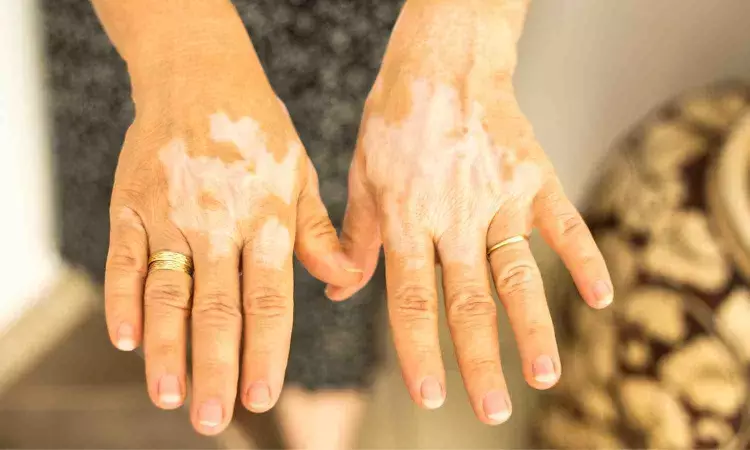- Home
- Medical news & Guidelines
- Anesthesiology
- Cardiology and CTVS
- Critical Care
- Dentistry
- Dermatology
- Diabetes and Endocrinology
- ENT
- Gastroenterology
- Medicine
- Nephrology
- Neurology
- Obstretics-Gynaecology
- Oncology
- Ophthalmology
- Orthopaedics
- Pediatrics-Neonatology
- Psychiatry
- Pulmonology
- Radiology
- Surgery
- Urology
- Laboratory Medicine
- Diet
- Nursing
- Paramedical
- Physiotherapy
- Health news
- Fact Check
- Bone Health Fact Check
- Brain Health Fact Check
- Cancer Related Fact Check
- Child Care Fact Check
- Dental and oral health fact check
- Diabetes and metabolic health fact check
- Diet and Nutrition Fact Check
- Eye and ENT Care Fact Check
- Fitness fact check
- Gut health fact check
- Heart health fact check
- Kidney health fact check
- Medical education fact check
- Men's health fact check
- Respiratory fact check
- Skin and hair care fact check
- Vaccine and Immunization fact check
- Women's health fact check
- AYUSH
- State News
- Andaman and Nicobar Islands
- Andhra Pradesh
- Arunachal Pradesh
- Assam
- Bihar
- Chandigarh
- Chattisgarh
- Dadra and Nagar Haveli
- Daman and Diu
- Delhi
- Goa
- Gujarat
- Haryana
- Himachal Pradesh
- Jammu & Kashmir
- Jharkhand
- Karnataka
- Kerala
- Ladakh
- Lakshadweep
- Madhya Pradesh
- Maharashtra
- Manipur
- Meghalaya
- Mizoram
- Nagaland
- Odisha
- Puducherry
- Punjab
- Rajasthan
- Sikkim
- Tamil Nadu
- Telangana
- Tripura
- Uttar Pradesh
- Uttrakhand
- West Bengal
- Medical Education
- Industry
Phototherapy with topical antioxidants, corticosteroids, or calcineurin inhibitors improve vitiligo symptoms: Study

A new study published in The Journal of Dermatological Treatment showed that for vitiligo patients, phototherapy combined with topical antioxidants, corticosteroids, or calcineurin inhibitors may provide better results.
About 0.5–2% of people worldwide suffer from vitiligo, a common acquired hypopigmentary condition marked by the formation of white macules. Dermatologists still have difficulties in stopping depigmentation, stabilizing depigmented lesions, and encouraging vitiligo repigmentation with current therapies. Common choices are 308-nm excimer laser/light (EL) and narrowband ultraviolet B (NB-UVB).
Antioxidants, calcineurin inhibitors, topical corticosteroids, and vitamin D analogs are frequently used in the treatment of vitiligo. However, prolonged topical use may result in negative side effects, including burning and skin atrophy, which should be carefully considered. The restricted ability of traditional meta-analyses and randomized controlled trials (RCTs) to do head-to-head comparisons makes evaluating the relative effectiveness of variable combinations difficult. Thus, to determine which common topical medication works best when paired with phototherapy, an NMA was used for the first time in this study. The results are intended to give medical professionals evidence-based knowledge to help them create individualized treatment plans for individuals with vitiligo.
This study examined phototherapy, which includes topical treatments in conjunction with narrowband ultraviolet B (NB-UVB) and excimer laser/light (EL) at 308 nm. The Cochrane Library, PubMed, and Embase were the sources of randomized controlled trials. A random-effects model served as the foundation for the data analysis, and surface under the cumulative ranking (SUCRA) curves were used to evaluate the treatments' effectiveness.
There were 27 trials in this NMA, totaling 2417 lesions (patches). The SUCRA results showed that the top three combination therapies for achieving ≥50% repigmentation were phototherapy plus antioxidants (SUCRA 87.7), corticosteroids (SUCRA 69.6), and calcineurin inhibitors (SUCRA 52.5).
For ≥75% repigmentation, the top three combination therapies were fractional CO2 laser (SUCRA 63.6), phototherapy plus antioxidants (SUCRA 89.0), and calcineurin inhibitors (SUCRA 70.3).
Overall, when used in conjunction with phototherapy, topical antioxidants, corticosteroids, and calcineurin inhibitors offer potential treatment alternatives for vitiligo. Phototherapy in conjunction with antioxidants or fractional CO2 lasers may improve treatment outcomes for people with stable vitiligo. However, further high-quality RCTs are required to confirm these results.
Source:
Luo, L., Huang, J., Fu, C., Hu, Y., Chen, J., Jiang, L., & Zeng, Q. (2025). The efficacy of combined phototherapy with topical therapy in vitiligo: a network meta-analysis. The Journal of Dermatological Treatment, 36(1), 2483808. https://doi.org/10.1080/09546634.2025.2483808
Neuroscience Masters graduate
Jacinthlyn Sylvia, a Neuroscience Master's graduate from Chennai has worked extensively in deciphering the neurobiology of cognition and motor control in aging. She also has spread-out exposure to Neurosurgery from her Bachelor’s. She is currently involved in active Neuro-Oncology research. She is an upcoming neuroscientist with a fiery passion for writing. Her news cover at Medical Dialogues feature recent discoveries and updates from the healthcare and biomedical research fields. She can be reached at editorial@medicaldialogues.in
Dr Kamal Kant Kohli-MBBS, DTCD- a chest specialist with more than 30 years of practice and a flair for writing clinical articles, Dr Kamal Kant Kohli joined Medical Dialogues as a Chief Editor of Medical News. Besides writing articles, as an editor, he proofreads and verifies all the medical content published on Medical Dialogues including those coming from journals, studies,medical conferences,guidelines etc. Email: drkohli@medicaldialogues.in. Contact no. 011-43720751


